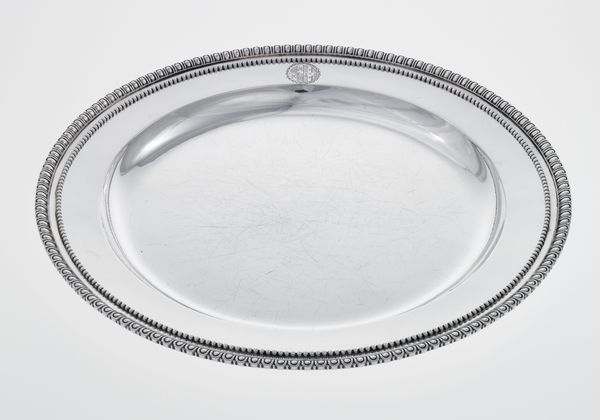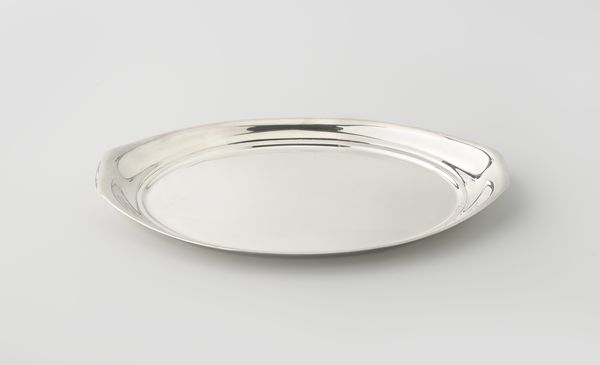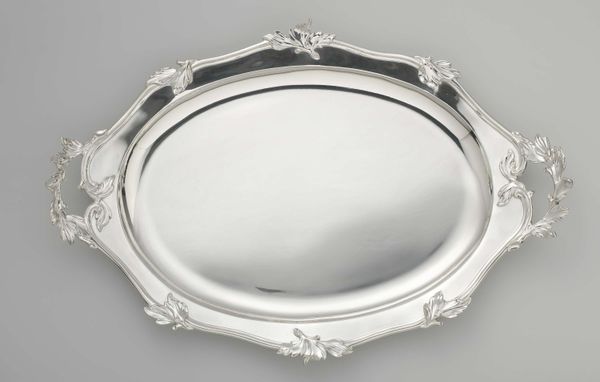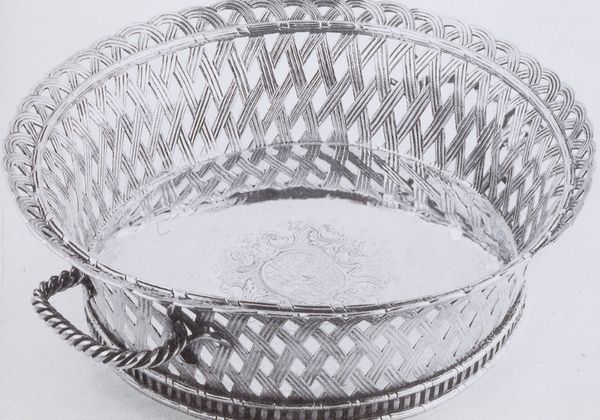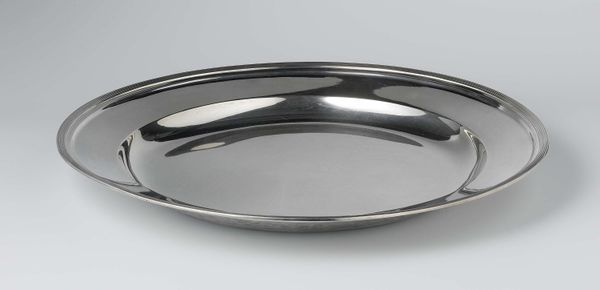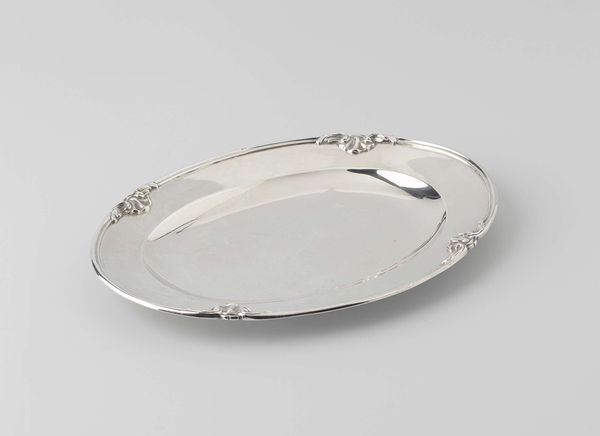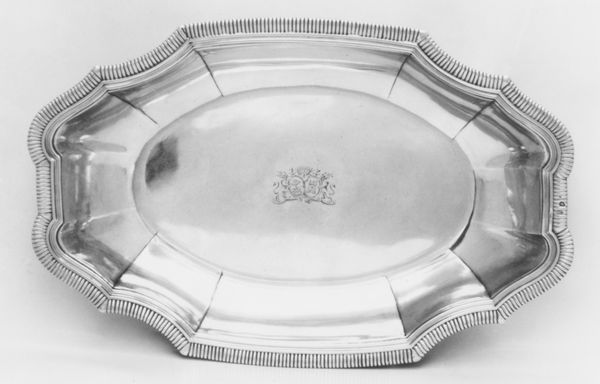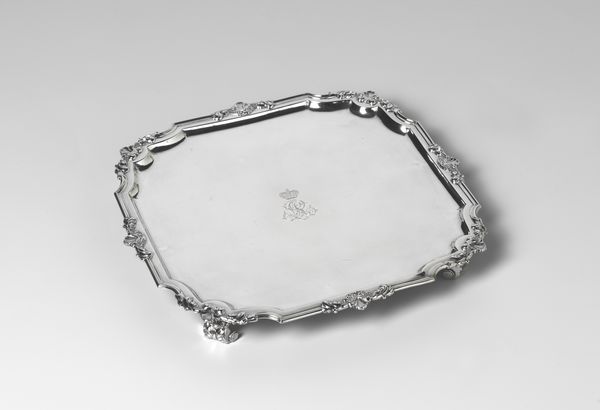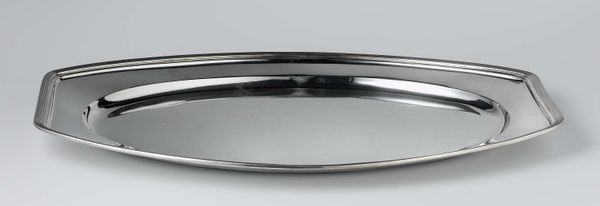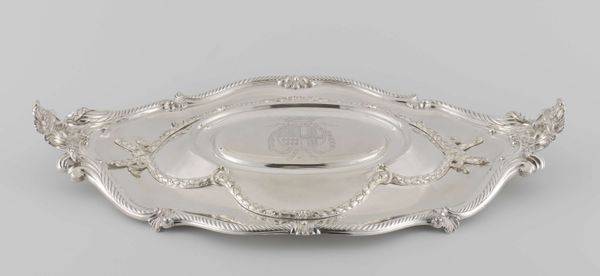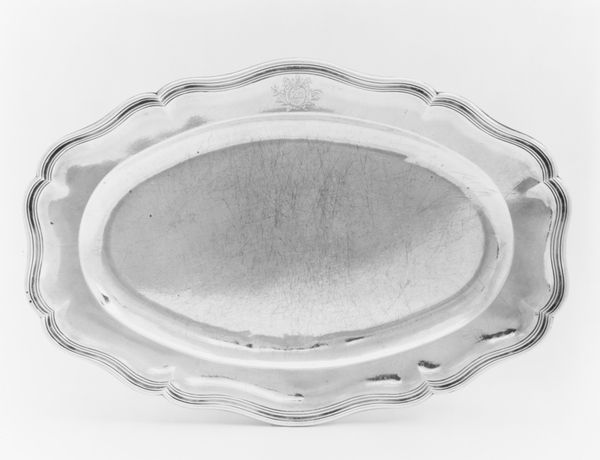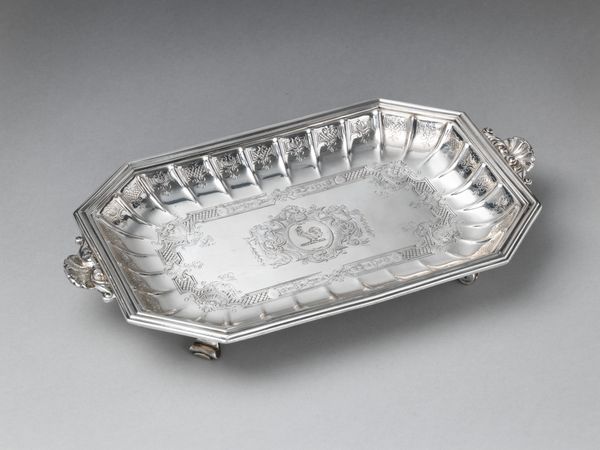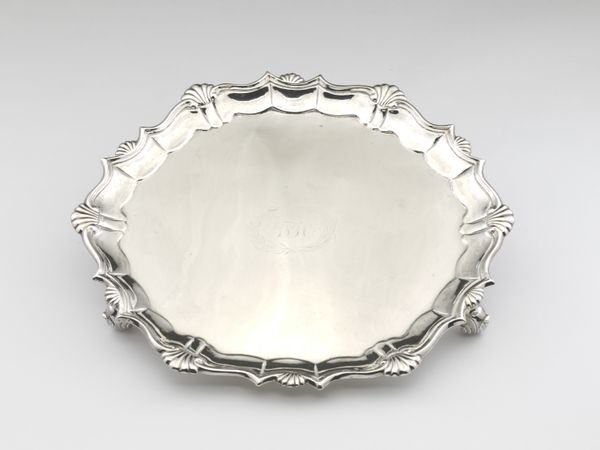
Dimensions: 15/16 x 13 1/16 x 13 1/16 in. (2.38 x 33.18 x 33.18 cm)
Copyright: Public Domain
Curator: Before us gleams the “Serving plate from the Williams-Wynn service,” crafted in 1773, now residing here at the Minneapolis Institute of Art. It’s the work of the renowned Robert Adam. Editor: It’s extraordinarily reflective! The eye is immediately drawn to its circular form, the play of light across its polished surface. The meticulous border catches the eye too; it's a symphony of repeated patterns. Curator: The plate is fashioned from silver, a material chosen for its inherent value but also its capacity to embody elegance and status. Consider the societal context: in 18th-century Britain, the acquisition and display of silver were potent declarations of wealth and refined taste. Editor: Indeed. But let's delve deeper into the making itself. Silverware production at the time demanded intense physical labor. Artisans meticulously hammered, shaped, and polished the metal. This plate isn't just an object; it's a testament to skill and an expression of class hierarchies. One can almost imagine the silversmith, carefully etching the details into the design, following the latest tastes of the time. Curator: Precisely! Look closer, and observe the formal elegance in its design. The plate adheres to Rococo principles. The symmetrical composition, curvilinear shapes, and classical motifs like repeating beadwork all exemplify the sophisticated vocabulary that Adam popularized. Editor: What interests me further is how the materials, in their raw state, became an object of social performance and wealth. Think about the mines, the refining process, and the transportation—each stage relying on labor, exploitation, and global trade networks. And now, its sits in the white gallery so still! Curator: From my perspective, this plate speaks of balance and refinement. Adam masterfully fuses functionality with aesthetic principles, creating an object that pleases the eye. I read a deep intentionality, and even beauty, in its pure shapes and form. Editor: Ultimately, a deceptively simple form that holds a complex world within. Its gleaming surface is only the veneer atop material and labor! Curator: A final assessment, then, reflecting divergent but compatible ideas.
Comments
minneapolisinstituteofart almost 2 years ago
⋮
In his monumental publication Works in Architecture, Robert Adam illustrated his work at 20 St. James's Square in London, the townhouse of Sir Watkins Williams-Wynn. Adam designed every aspect of its highly influential interior, including all furnishings, to create a total work of art inspired by archeological motifs. These plates belong to the elaborate dinner service Adam designed for 20 St. James Square. Whether serving meats during the second course at dinner, or on display along the sideboard, these plates were made to reflect the spare elegance of the interior.
Join the conversation
Join millions of artists and users on Artera today and experience the ultimate creative platform.
